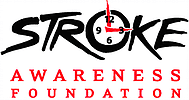 The signs were there. First, a hand unexpectedly failed to perform a regular function. Facial numbness followed. “I was in total denial,” says Mark Youngblood, a registered nurse of nearly 30 years who suffered an ischemic stroke in 2014.
The signs were there. First, a hand unexpectedly failed to perform a regular function. Facial numbness followed. “I was in total denial,” says Mark Youngblood, a registered nurse of nearly 30 years who suffered an ischemic stroke in 2014.
Mark, 55, rose before dawn on March 31. He looked forward to his morning exercise routine of weight training and spinning classes that kept him fit for outdoor sports with his teenage son. Nothing was unusual until Mark tried to put his socks on. He had no control of his left hand and his arm was numb from fingertips to elbow. Mark woke his wife, also a nurse, to explain the incident and they agreed that he probably just slept wrong. He decided to forego his workout and went back to bed. He woke with feeling and use restored, but quickly discovered that the left side of his face was numb. “I couldn’t feel the heat of the coffee when I touched the cup to my lips,” he recalls. Mark considered that he could be experiencing a transient ischemic attack (TIA). TIA symptoms are similar to stroke, but typically last
only a few minutes. TIA can be a warning sign of stroke and a signal to call 911. Mark and his wife again downplayed the episode and the numbness subsided. He left for his shift at Good Samaritan Hospital.
Though Mark noted to make an appointment with his primary physician, he couldn’t shake the voice of professional experience. He casually recounted the morning’s incidents to a colleague and to the hospital’s stroke coordinator who he ran into by happenstance. At the stroke coordinator’s urging, Mark went immediately to the emergency room. Tests revealed that a small piece of a larger blood clot in Mark’s right leg presumably traveled up his veins through the justdiagnosed patent foreman ovale (PFO), a hole in the heart that normally closesduring infancy. The small clot lodged in the arterial supply of Mark’s brain, creating a blockage that caused a stroke. “This all took me by surprise. It was surreal,” he says.
Mark did not require clot dissolving drugs or other interventions. He was hospitalized for a week and now takes blood thinning medication. As a nurse and a stroke survivor, Mark is adamant that people not wait for signs to subside as he did. “As soon as signs and symptoms show up, get to a hospital,” he cautions. “It’s very, very important to not ignore the signs. I should have called 911 and activated the system.”



